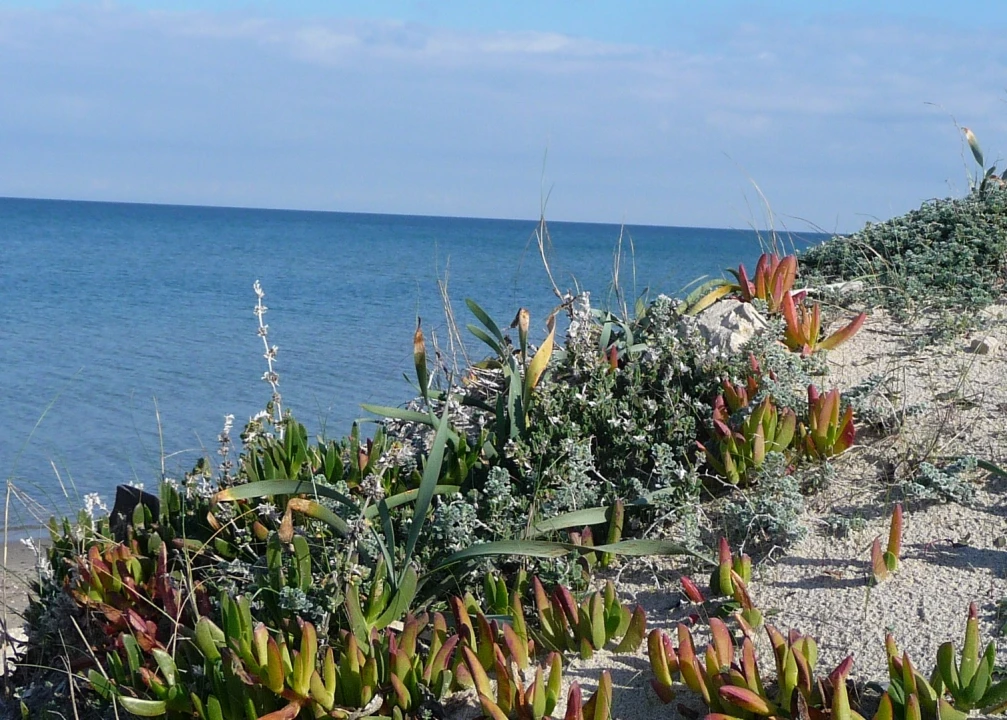Turquoise waters, jagged coasts, hidden bays, rocks sculpted by the wind, white-sand beaches set within natural pink granite: this is the “comp card” of the Sardinian coast from Porto Torres to Olbia.
Both are final destinations on an itinerary that winds its way between the Gulf of Asinara and the Costa Smeralda and that touches some of the best-known places on the Island. It is also here that high society plays, and where hidden, wild pockets of land wait to be discovered, all within an ultra-millenary environment.
This coastal itinerary of almost 124 miles takes us through Sardinia’s northern beaches, from the Province of Sassari to Olbia-Tempio.
Porto Torres to Castelsardo
On the Gulf of Asinara, we depart from Porto Torres, a principal touristic draw in northeastern Sardinia. It is also an excursion hot spot, particularly where the beaches (surrounded by pines and eucalyptus trees) of Platamona are concerned. In the city itself, see San Gavino (built 1080), the largest and oldest Roman basilica in Sardinia; and the Roman archaeological site, complete with thermal baths; and the Ponte Romano, also ranking as the biggest and most ancient on the Island.
Treat yourself to two detours. One veers to the west and peers out onto the Stintino Sea that trips over shades of navy, azure and sky blue; then, pass through the Parco nazionale dell’Asinara and La Pelosa, a splendid beach of white sand and deep seabeds. Meanwhile, the other detour leads to the pre-Nuragic altar of Monte d’Accoddi, a megalithic monument dating back to the mid-4th Century B.C.
Making yourway back to the coast, you will notice Castelsardo on its rocky promontory. Founded in 1102 by the Doria Family - Genoese nobles - Castelsardo has remained intact up until the present, from its walls and narrow streets to the castle and fortress.
Just 2.5 mi away stands the rock known as Elefante – a mass that has been eroded and sculpted by the wind, rain and the residue of ocean salt.
From Costa Paradiso to Palau
The limpid beaches of Costa Paradiso line the way towards Santa Teresa di Gallura, along which travelers will see the red granite-colored Isola Rossa. Then, Capo Testa, where the wind always makes itself known, is a rocky peninsula; here the Romans extracted granite from an ancient quarry, dotted still by ancient rough-hewn columns.
Santa Teresa, among the most frequented localities of Gallura, dominates over the Bocche di Bonifacio, departure point for ferries heading to Corsica and the Maddalena Archipelago, whose main port of access is Palau.
Maddalena bears a rocky coast modeled by an inspired wind that leaves behind evocative figures; one resembles a gigantic Bear facing out toward the Island of Caprera. Nearby is Port Raphael, featuring a stairway that joins to the ancient military lookout post and, thus, to a beautiful view on Maddalena and the coast.
Arzachena to the Costa Smeralda
The tour continues to Arzachena and its symbolic granite Mushroom Rock.
It is in Baia Sardinia, rather, where Sardinia gets ever more glamorous, evidenced in its luxury hotels and dream villas hiding within the Mediterranean vegetation.
The Costa Smeralda (Emerald Coast) traces a path of rocky promontories, deep coves and inlets, and incredible beaches. Porto Cervo is the most refined and elite touristic spot, the summertime playground of the international jet-set – to which the docked yachts and sailboats undoubtedly attest. Other than Porto Cervo, feast your eyes on the splendid fjord of Poltu Quatu, the little gem of Liscia di Vacca, Porto Pollo, and Cala di Volpe, a tiny natural port located between two beaches.
The most beautiful beaches? Principe, Capriccioli, Liscia Ruia, Razza di Giunco and the beach at the mouth of the River Liscia, where in spring the sand dunes turn pink with the blossoming of the plant known as “Lady’s Cushion” or "sea pink" (genus Armeria).
Be sure not to miss…
A trip to the Maddalena Archipelago and the Island of Tavolara (a protected area).
A visit to Porto Rotondo (Porto Cervo’s more relaxed sister port), to Olbia, to Tempio Pausania (the capital of cork oaks), and to San Pantaleo, set between imposing granite promontories. These rocks feature a surface of tafoni, small craters or potholes linked so as to cover almost the entire surface in a webbed network, resembling an undersea coral or a small-scale moon landscape. Formed by the sea winds, they are quite visually-captivating! Completing San Pantaleo’s peculiar ambience are the low-pitched houses and high population of artists (painters, above all).
At Capo Figari, near Golfo Aranci, mouflon (wild sheep) roam freely.
Sports
Vacationers interested in athletic activity during the tour can horseback ride or birdwatch, trek or golf, play tennis or enjoy boating activities, from sailboating to windsurfing. Additionally, a concentration of scuba diving centers lies primarily betweeen Santa Teresa di Gallura and Tavolara.
Shopping
Rugs, tapestries, cushions in wool, cotton and linen abound, while carpets and pretty baskets woven in Mediterranean dwarf palm can be found in Castelsardo and Porto Torres. Sardinian goldwork is very particular: choose from singular souvenirs, filigree buttons embellished with garnet, and unique wedding rings. Look for ingenious cork creations in Olbia and Gallura, and a vast range of Sardinian artisan wares and goods all along the coast.




